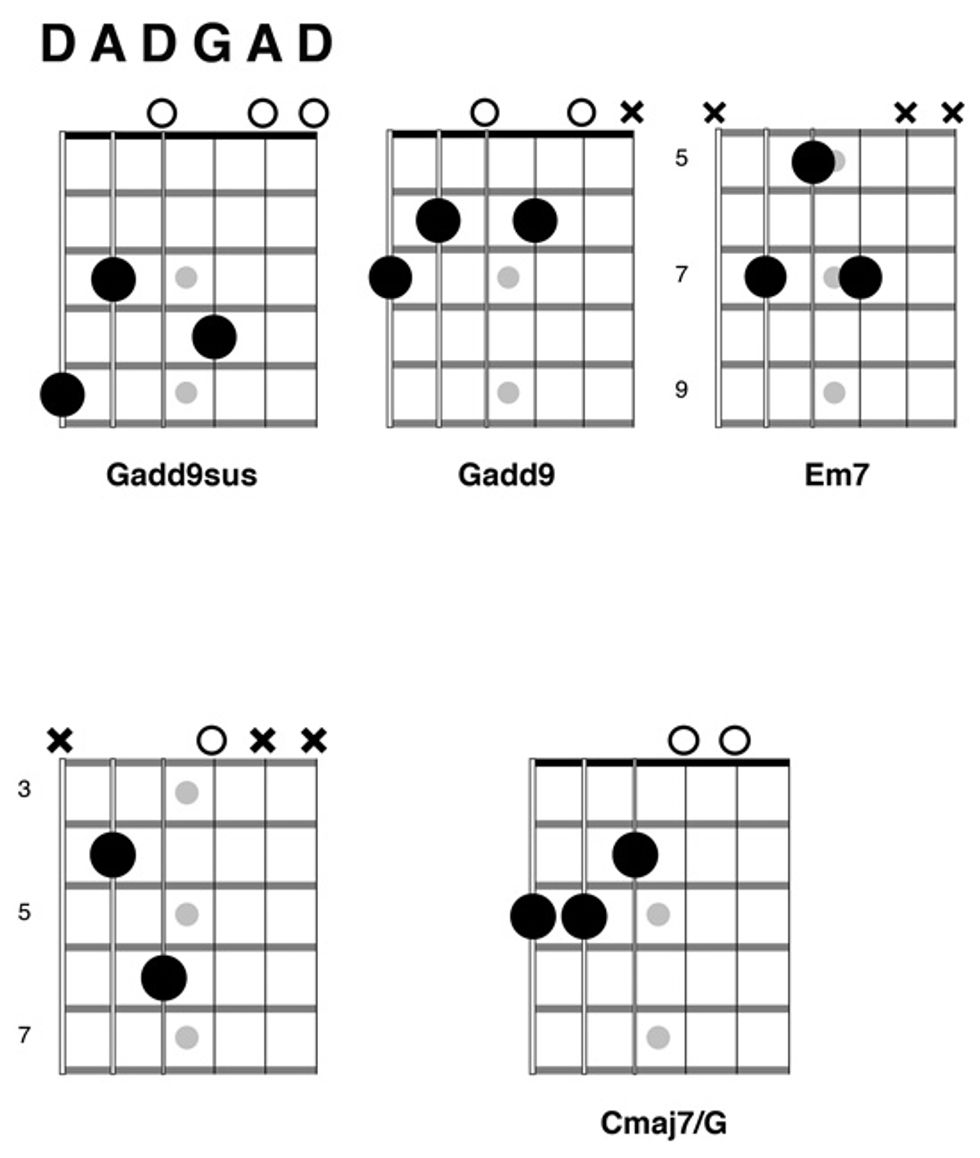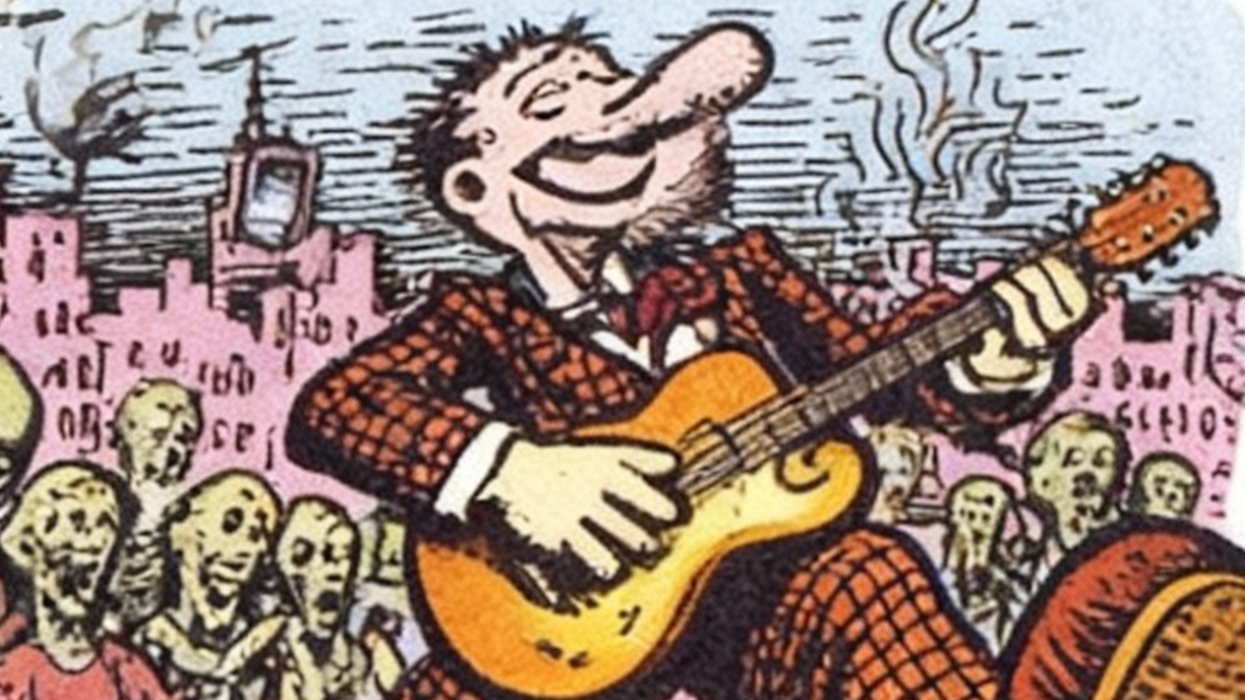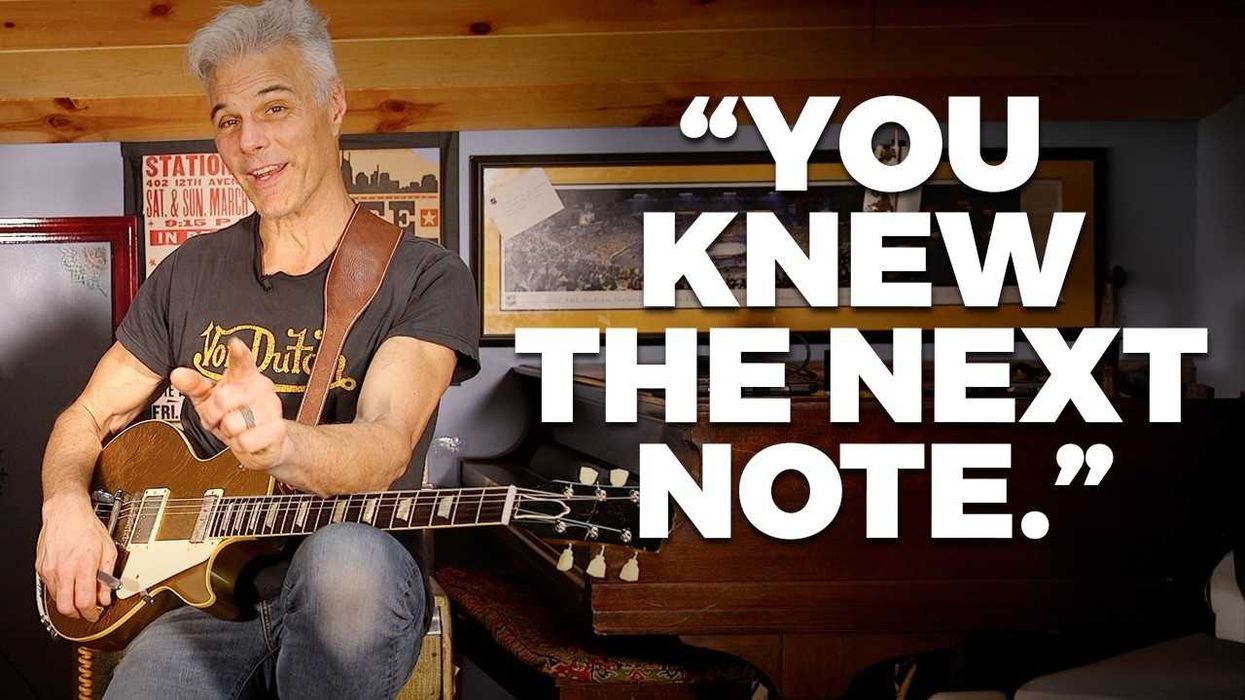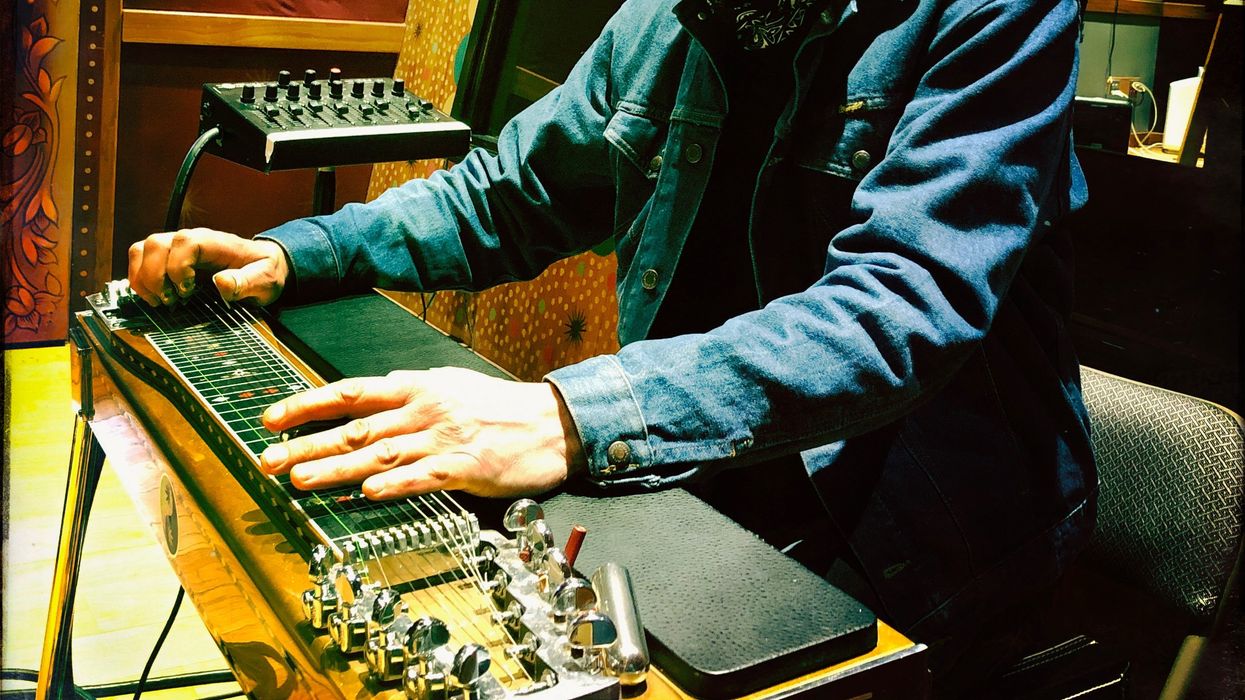
The way we 6-stringers often talk in awed, reverential tones about licks and leads by heroes like Hendrix, Stevie Ray Vaughan, Eddie Van Halen, etc.—“Dude, he’s totally wailing on those double-stop bends,” or “check out those fretboard-melting arpeggios,” or “those tapped riffs are off the friggin’ chain”—you really couldn’t blame the average eavesdropper for thinking we view chords as a technicality to solo over.
But when you look closely at most game-changing lead players, they’re pretty much all chord geniuses—in fact, their chord choices are inextricably linked with the greatness of their spotlight-garnering solos.
For some of us, though, chords are the main attraction—an infinite landscape of note, string, and fingering combinations that can add jolting, ensnaring, and deeply moving moods, textures, and dimension to a song.
There are a lot of angles to approach the instrument from, but what gets me off is writing tunes that explore the mystique of music and guitar while absorbing influences through osmosis rather than dissection. I’ll happily cop to being ignorant about fancy chord names—I had to have PG associate editor Jason Shadrick tell me the correct names for those below (although one of them is too messy to name)! It might just be the wannabe-artiste part of me trying to justify my lazy-ass ways, but I believe the feeling-around-in-the-dark approach to chords often leads to fresh explorations and progressions that schooled players concerned about “correctness” might turn up their nose at.
Now, I don’t say any of this from any standpoint of rightness vs. wrongness. I’m just saying I came to guitar by way of bombastic players, but for many years now, being more cognizant of unorthodox chords has brought me a lot more satisfaction as a player. And it’s a continuing journey that started and was helped along by various players. When I was an impressionable teen in the mid ’80s, Vernon Reid’s playing with Living Colour—particularly on songs like “Funny Vibe” and “Glamour Boys”—converted me to the joys of funky chords and avant soloing. And though I now get my clean-toned funk fixes from James Brown, the Commodores, Sly and the Family Stone, and others, it was the Fixx’s Jamie West-Oram—remember “One Thing Leads to Another” and “Red Skies at Night”?—who first taught me to appreciate the snappy funk of the instrument’s top three strings.
Later, Allan Holdsworth taught me to enjoy wide intervals, and Jimmy Page’s work on Houses of the Holy and In Through the Out Door, as well as Eric Johnson’s early albums, taught me the power of finger vibrato with atmospheric chords and some nice delay or reverb.
I admit the “5 Shapes That Changed My Life” thing above is a bit disingenuous. My whole point is to encourage you to find unusual voicings and fingerings. The shapes shown here are just a few of the weird joys I’ve come up with. But I also love getting a little witty with standard shapes. Try pairing a typical power chord with an open string—play a 3rd-fret power chord on the E string with a D on both the A string (5th fret) and on the open 4th string. Or, with a 5th-string power chord, add another fifth to the equation on the 6th string. Or experiment with open G, B, and/or high E strings inserted with standard barre chords all over the neck. Even better, dive into inversions—put your root on the 5th, 4th, or any other string except the E or A, and then add a mysterious low note on the 6th or 5th strings.
Like I said before, I’m pretty much the opposite of pedantic when it comes to playing guitar. Yeah, I know basic chords and the major-scale modes, but as many smarter, better players have said before, throwing out the rules after learning them is where a lot of the fun comes in. I hope you find some sort of fun or inspiration in the grips shown here, and if you care to share some of your own unusual chord approaches, I’d love to hear about them.
Shawn Hammond
shawn@premierguitar.com









![Rig Rundown: Russian Circles’ Mike Sullivan [2025]](https://www.premierguitar.com/media-library/youtube.jpg?id=62303631&width=1245&height=700&quality=70&coordinates=0%2C0%2C0%2C0)








